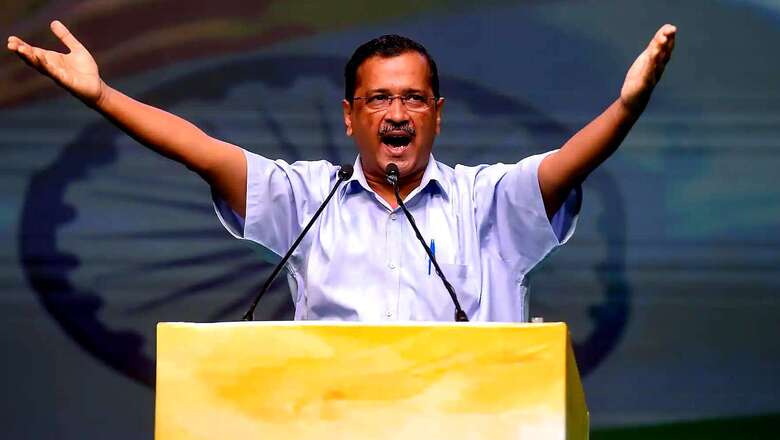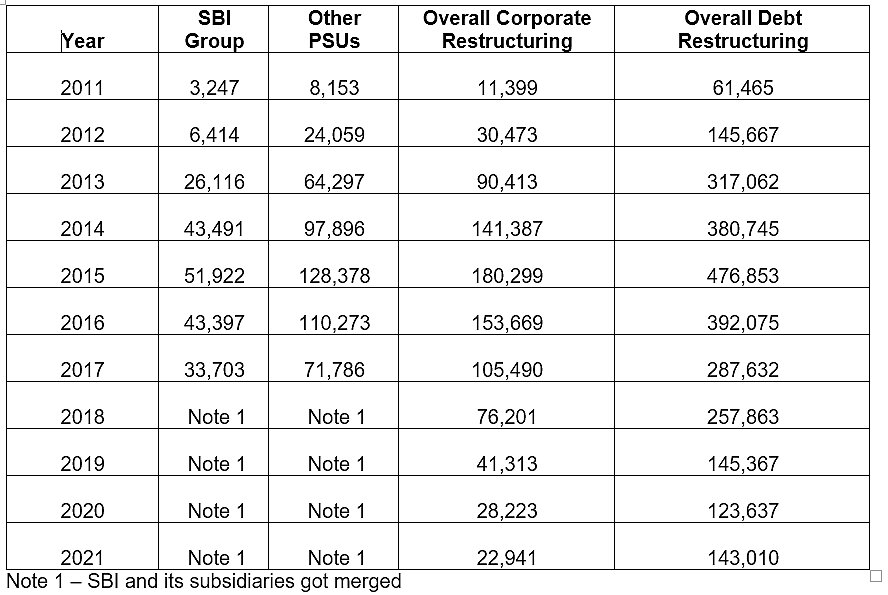
views
Joseph Goebbels famously said that if you tell a lie big enough and keep repeating it, people will eventually come to believe it. Our political leadership seems to be following these principles and manufactured lies are spread to mislead the masses.
The Congress is dying a slow death and there are many contenders who want to fill the vacuum. Arvind Kejriwal-led Aam Aadmi Party (AAP) is pushing hard and going beyond the established principles of politics to project itself as an alternative to the ruling BJP. In the recent series of attacks, AAP is accusing the Narendra Modi government of giving undue financial benefits to corporates by writing off loans worth more than Rs 10 lakh crore.
A loan write-off is a technical term which is often used to sanitise the balance sheet and get some taxation benefits. A write-off doesn’t mean that the bank will stop chasing for recoveries. A loan waiver is different in which banks waive off the amount and no efforts are made for further recovery.
Kejriwal and team is well aware of these technicalities but they seem to be following Goebbels principle.

RBI data shows that corporate loan accounts which were subjected to restructuring have decreased consistently after 2015. Overall loan amount subjected to restructuring has also declined consistently, except for 2021 which is due to stress caused by the Covid-19 pandemic.
Insolvency law was implemented in 2016 and it has a huge success. Cases involving amount worth approximately Rs 7 lakh crore have been resolved under IBC. Capital adequacy is another major indicator to measure the health of banking industry and it has improved after introduction of IBC.
This entire discussion originated after PM Modi criticised freebies and the Supreme Court also commented that freebie culture is not sustainable. The AAP is no longer new to politics and has been ruling Delhi for almost eight years.
CM Arvind Kejriwal often highlights that Delhi is a revenue-surplus state despite giving subsidies, but he hides that Delhi has been a revenue-surplus state since 2004-05. Delhi is revenue-surplus primarily because pension liability of the Delhi government employees and expenditure of Delhi Police is borne by the central government.
This luxury is not available to other states and perhaps this is the reason Punjab CM Bhagwant Mann is asking the Centre to fund his irrational poll promises. The Delhi CM conveniently skips the fiscal deficit situation and increased borrowings. Delhi had close to Rs 19,000 crore fiscal deficit in 2021-22 and estimated fiscal deficit for 2022-23 is Rs 14,000 crore.
Transparency has gone for a toss during AAP regime which is evident from the fact that annual accounts of various State Public Sector Enterprises (SPSEs) and autonomous bodies were not submitted to C&AG for audit. Entrepreneurship culture is missing in the government and net-worth of various SPSEs has been completely eroded. Few notable names are Delhi Power Company Limited and Delhi Transport Corporation (DTC) which had negative net-worth of Rs 37,125 crore on March 31, 2020. Even Delhi Jal Board (DJB) annual accounts are not published after 2017 and Opposition is alleging a huge scam in DJB.
C&AG has already highlighted that concessionaires by Delhi State Industrial and Infrastructure Development Corporation Limited (DSIIDC) have been given undue financial benefits. The AAP government also cancelled liquor licenses after recommendation of CBI inquiry on the new Excise Policy which bypassed rules. Surprisingly, the Opposition is also not energetic in taking up these issues which indicates quid pro quo.
Health and education sector reforms are highlighted as major achievements of the Kejriwal government. However, facts and figures reveal the dismal performance of the Delhi government. Data published by the government shows that the number of teachers for primary till secondary schools has reduced and investment on education as percentage of overall expenditure almost remained at the 2014 level. Pass percentage in Class 10 for Delhi government schools and India was 81.27 and 94.4, respectively, for 2022, which punctures the whole narrative of education reform. The number of hospitals in Delhi decreased from 95 in 2014-15 to 88 in 2021-22 and if this decline is sought to be offset with Mohalla clinics it would constitute a cruel joke on Delhiites.
Delhi is struggling to control pollution but the number of fleets operated by DTC has come down from 5,223 in 2014 to 3,762 in 2020 (pre-Covid era). Fleet utilisation percentage and daily average passengers have also gone down in the AAP era. The Delhi government is giving electricity subsidy and capex amount is diverted to fund this. Expenditure on energy sector was 4.15% of total plan expenditure which came down to 0.03% in 2021. Entire money is diverted towards subsidy and the CM is reaping the benefits of infra created by the previous government at the cost of the future of Delhiites.
Goebbels also said that propaganda is not an end in itself, but a means to an end. May be Arvind Kejriwal is die-hard fan of propaganda politics and is using it as a means to amass political power.
The author is a chartered accountant and public policy analyst. His Twitter handle is @shashanksaurav. The views expressed in this article are those of the author and do not represent the stand of this publication.
Read the Latest News and Breaking News here




















Comments
0 comment